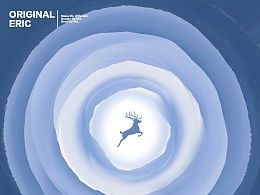
Yellow Fly Bite: A Detailed Overview
Have you ever been bitten by a yellow fly? If so, you know how irritating and uncomfortable these bites can be. In this article, we will delve into the details of yellow fly bites, including their causes, symptoms, prevention, and treatment. Let’s get started.
What is a Yellow Fly Bite?

A yellow fly bite is caused by a small fly known as the yellow fly, which belongs to the family Tabanidae. These flies are commonly found in tropical and subtropical regions around the world. They are known for their distinctive yellow and black coloration, which gives them their name.
Causes of Yellow Fly Bites

Yellow flies are attracted to humans and animals due to the carbon dioxide we exhale and the heat emitted from our bodies. They use their long proboscis to pierce the skin and feed on the blood. This feeding process can lead to an allergic reaction in some individuals, resulting in a yellow fly bite.
Symptoms of Yellow Fly Bites

The symptoms of a yellow fly bite can vary from person to person. Common symptoms include:
| Symptom | Description |
|---|---|
| Pain | Immediate pain upon the bite, which can be mild to severe. |
| Redness | The area around the bite becomes red and inflamed. |
| Swelling | The bite area may swell, sometimes significantly. |
| Itching | The bite area may become itchy, leading to scratching. |
| Bruising | In some cases, the bite area may bruise. |
| Wheal | A raised, red bump may form around the bite. |
In some individuals, a severe allergic reaction to the bite can occur, resulting in symptoms such as difficulty breathing, hives, and anaphylaxis. If you experience any of these symptoms, seek medical attention immediately.
Prevention of Yellow Fly Bites
Preventing yellow fly bites involves taking certain precautions, such as:
- Wearing long-sleeved shirts and pants when outdoors, especially in areas known for yellow fly infestations.
- Applying insect repellent containing DEET, picaridin, or oil of lemon eucalyptus to exposed skin and clothing.
- Using bed nets and screens to prevent flies from entering your home or sleeping area.
- Eliminating standing water around your home, as it can serve as a breeding ground for mosquitoes and other insects.
Treatment of Yellow Fly Bites
Most yellow fly bites can be treated at home with over-the-counter remedies. Here are some effective treatments:
- Ice Pack: Apply an ice pack to the bite area to reduce swelling and pain.
- Antihistamines: Take an antihistamine to relieve itching and reduce inflammation.
- Topical Creams: Apply a hydrocortisone cream or calamine lotion to soothe the skin and reduce itching.
- Warm Compress: Gently apply a warm compress to the bite area to promote healing.
In cases of severe allergic reactions, medical attention is necessary. Your healthcare provider may prescribe antihistamines, corticosteroids, or other medications to manage the symptoms.
Conclusion
Yellow fly bites can be a nuisance, but with proper prevention and treatment, you can minimize their impact. By understanding the causes, symptoms, and remedies for yellow fly bites, you can take the necessary steps to protect yourself and your loved ones.




